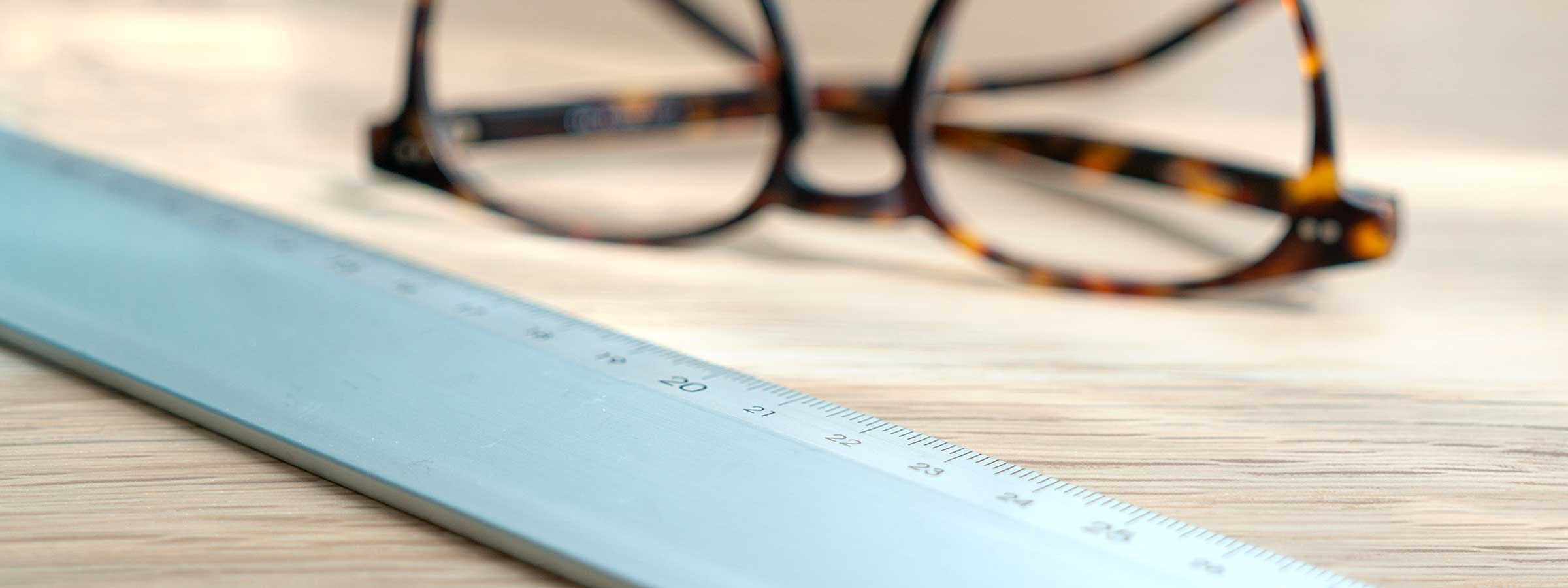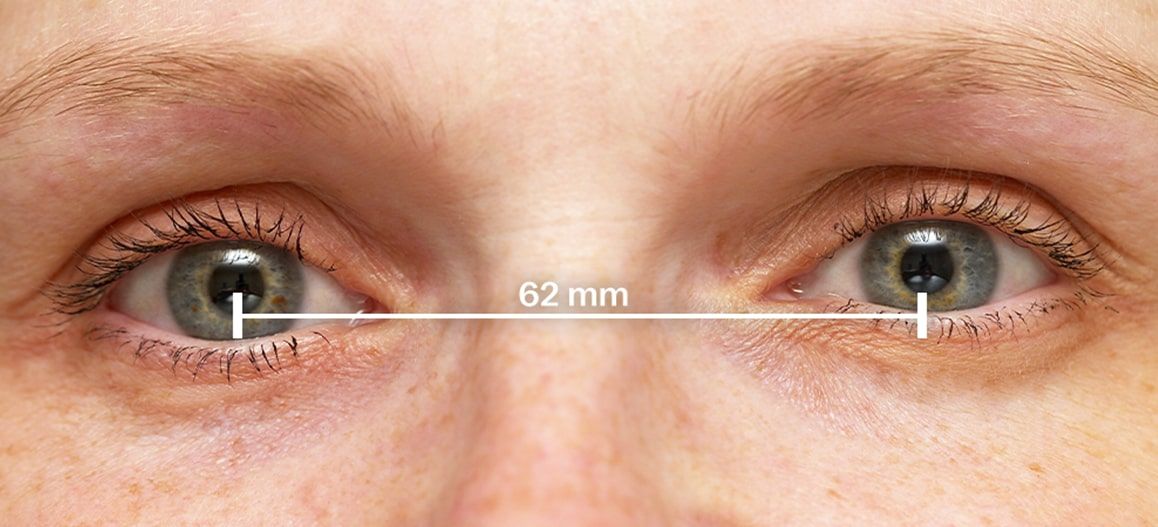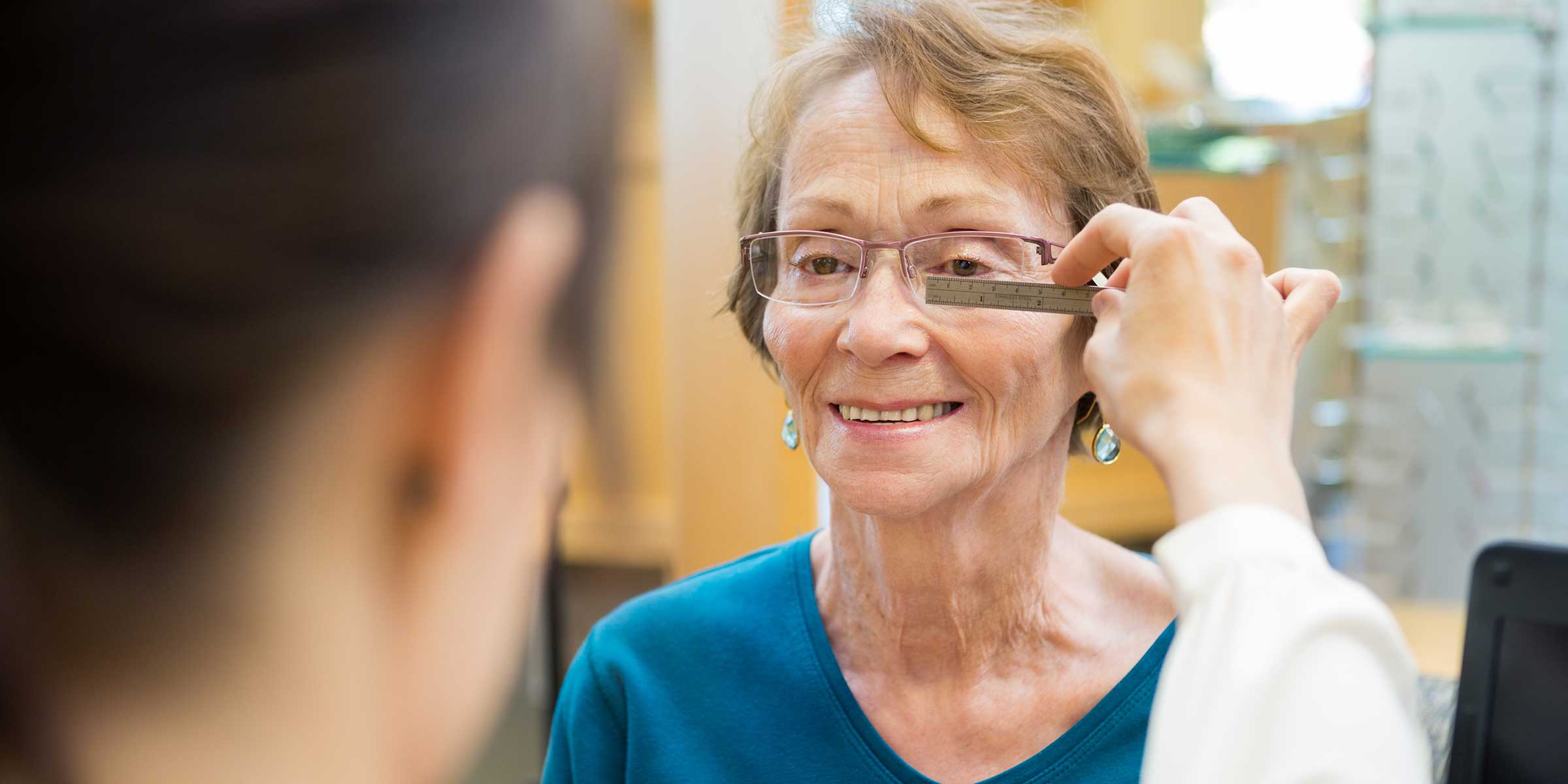Pupillary distance (PD)
What is pupillary distance and why is it important?


Your PD, or pupillary distance, is the measurement between the centre of your pupils. It’s measured in mm and very important if you have a strong prescription or are ordering varifocal lenses so that the optical centre of the lenses can match the wearer's PD for best vision.
Most PDs are in the range between 55mm and 72mm, though some people can have smaller or larger PDs. In 1988 the US Army surveyed 4000 army service personnel and found that the average PD for women was 62mm and the average for men was 64mm. This is why our default PD is averaged at 63mm for everyone.


If your prescription isn’t very strong, you will be able to use the average PD without any problems, but if your prescription is strong it’s important that this is measured accurately or you may suffer headaches, eye strain or fatigue, and you won’t see as well through your glasses.
Your PD varies in size depending on whether you’re looking at long distance or close objects. By design humans are hunter-gatherers needing to see clearly over long distances. Our eyes have evolved so they’re happiest and most relaxed looking straight ahead with both eyes parallel. However, when we look at close objects our eyes converge making the PD approximately 3mm narrower than the distance PD.
How will I know if I need an accurate PD?
Generally speaking you’ll need an accurate PD if the sphere (SPH) value for either eye is over 5.00, or your cylinder (CYL) value is over 2.50. If you want varifocals you’ll need one irrespective of your prescription values. There are a few other reasons why an accurate PD is needed, but don’t worry, our opticians will contact you to discuss the order if that’s the case.


How can I get my PD?
Your optician will have measured your PD in the eye examination, though they don’t routinely provide this when they supply your prescription details. Some opticians will be happy to let you know your pupillary distance, though most will refuse or charge you for providing it.
If they won’t supply your PD measurement it’s not accurate enough to measure it yourself in the mirror, or to allow someone who isn’t trained to do it for you. Don’t worry though, it’s quite straightforward to provide this information. Learn more about how you can get your PD to order on Glasses Direct here.
